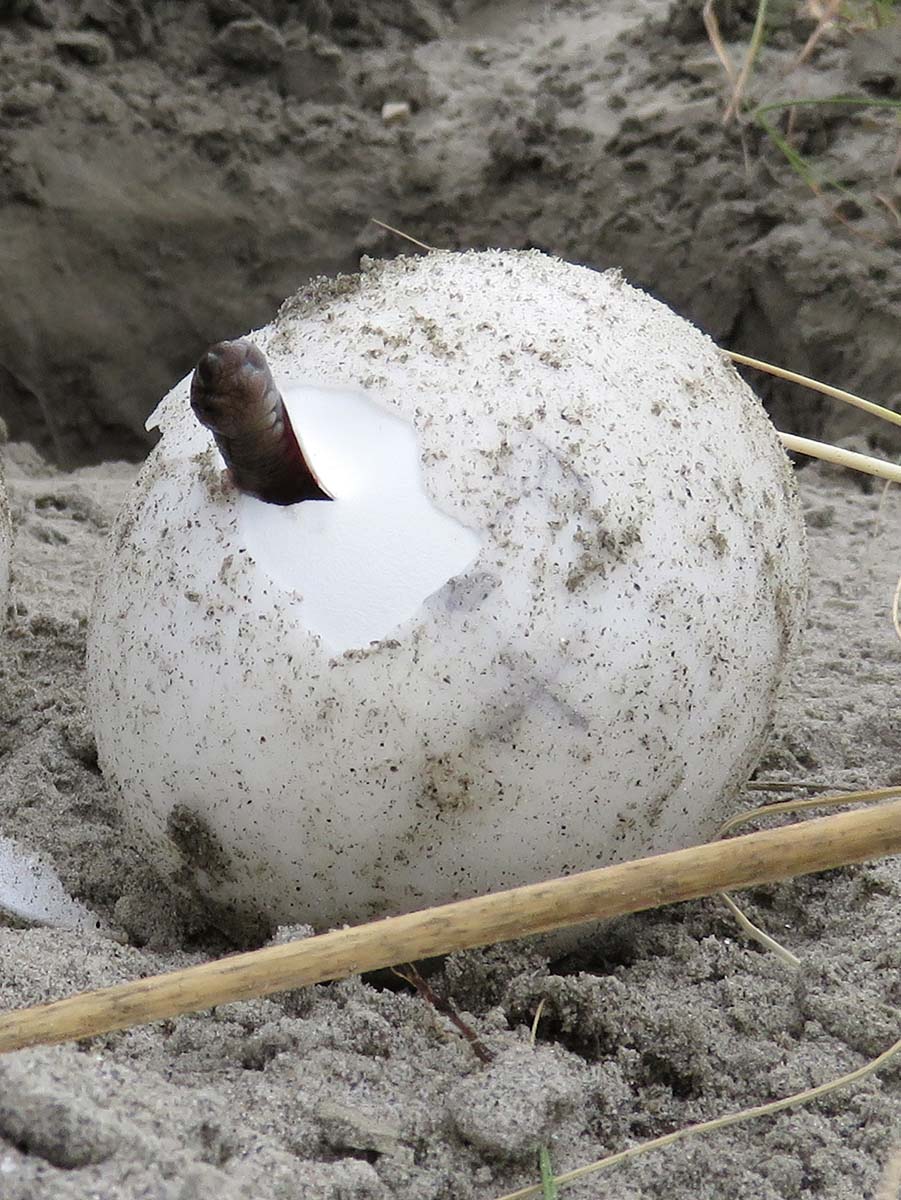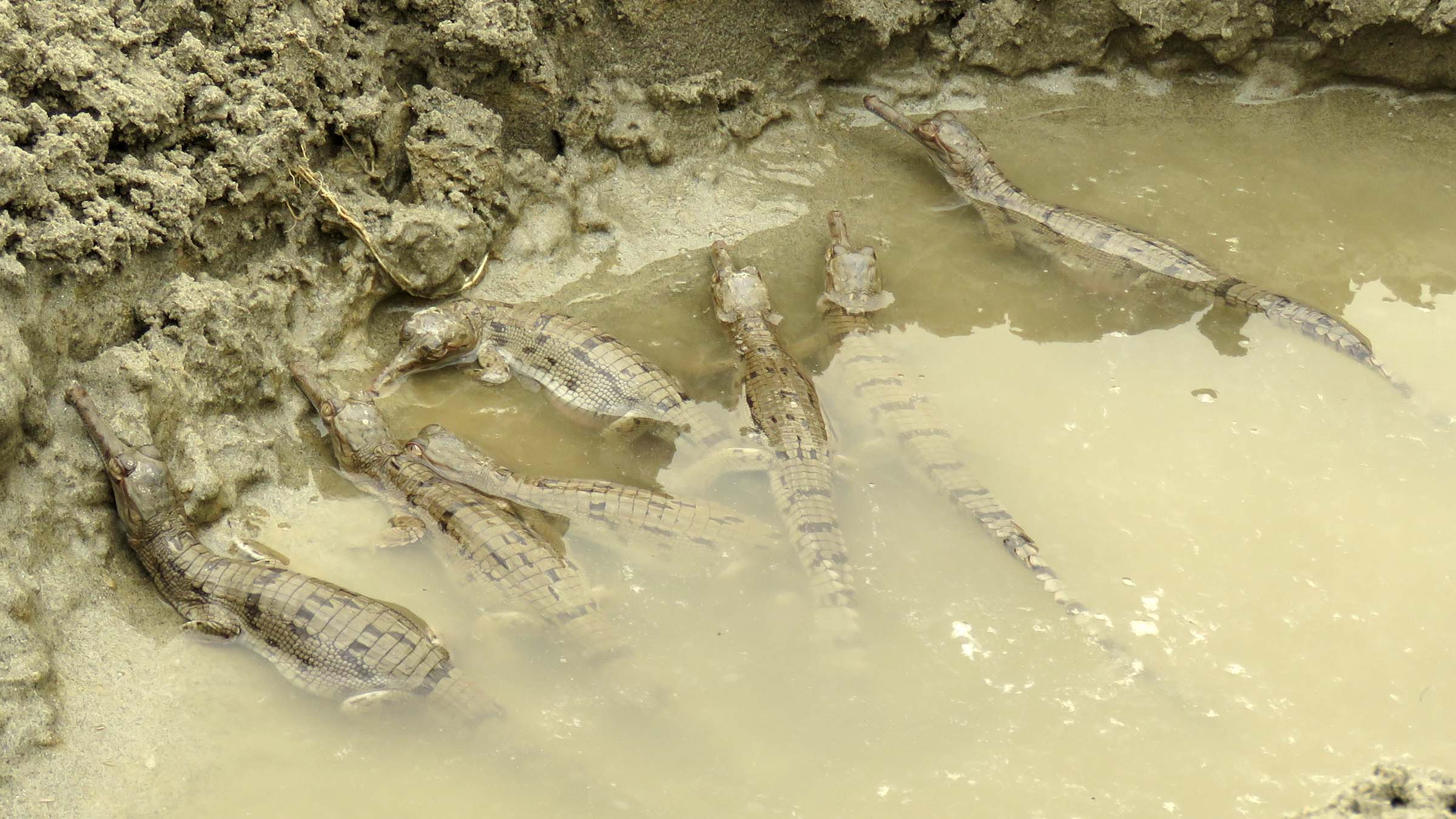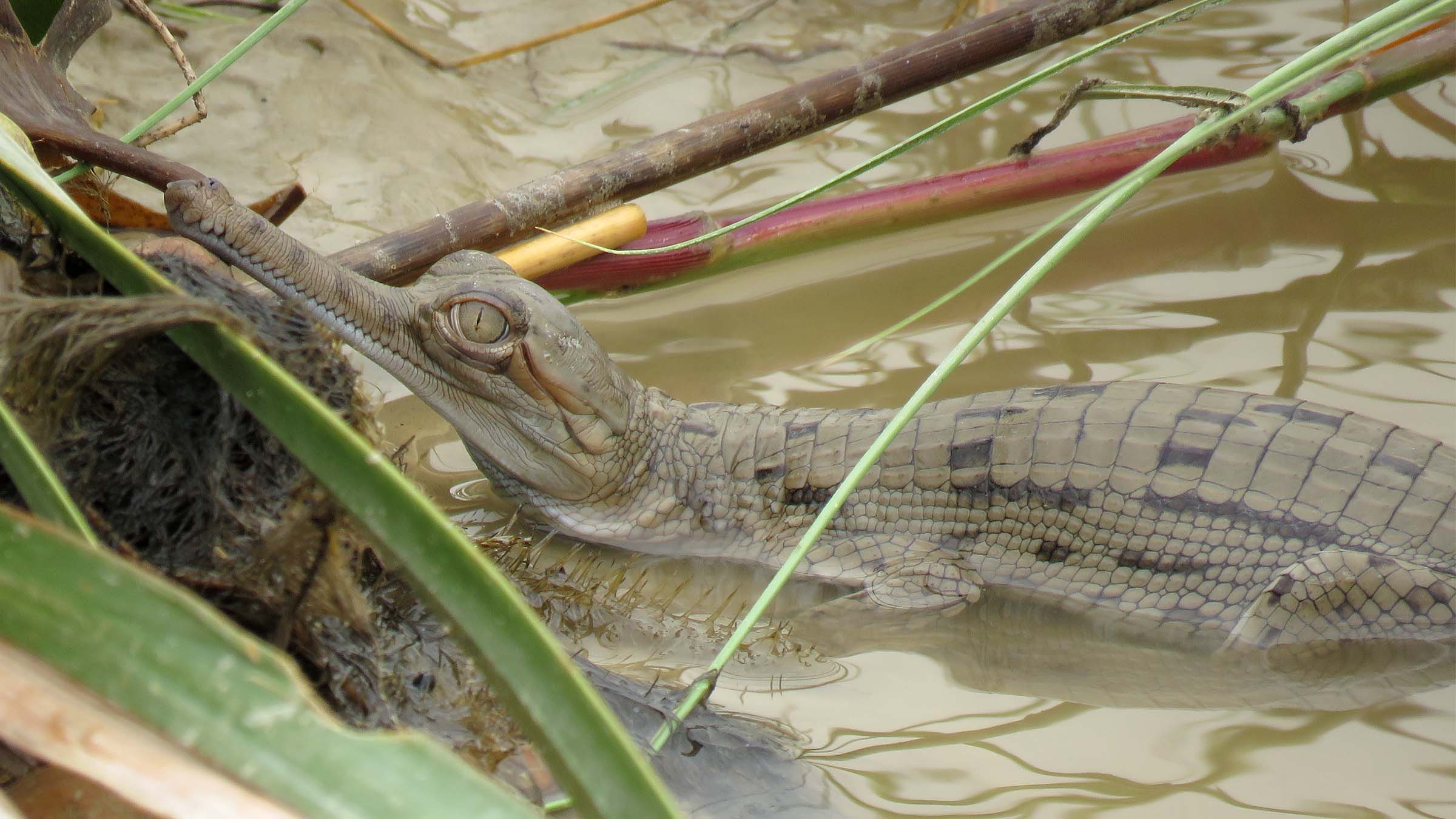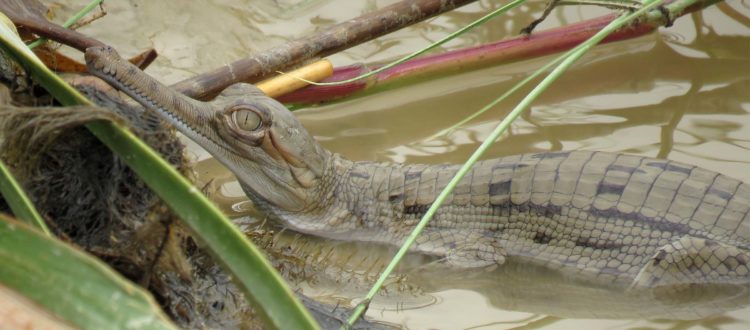Gharials bless the Gandak river with gen next
Valmikinagar 22 nd June 2018. Gharial – the fish-eating long-snouted crocodilian is bolstering its population in the Gandak River flowing through the plains of the northern state of Bihar. Encouraging news coming in from the field where the team of WTI biologist, local villagers and volunteers witnessed the emergence of hatchlings from the gharial nests on the left bank of the river approximately 100 km downstream of the barrage across the river at Valmikinagar in West Champaran district.

Gharial hatchlings emerging out of the eggshell
‘On 14 th June 2018 twenty hatchlings emerged out of the two nests that we artificially created in-situ and shifted the eggs into it to save from submergence and erosion due to rise in water level in Gandak’, says Subrat Kumar Behera, Assistant Manager and point person of the Gharial Conservation Project of WTI. The shifted nests were monitored and protected by local volunteers and project staff. Further, 39 more hatchlings were observed swimming further downstream.
Started in 2014, the project funded by the Environment & Forests Department, Government of Bihar aims at recovery of Gharial in the Gandak River, known as Narayani in Nepal. The International Union for Conservation of Nature (IUCN) assessment did not recognize Gandak as the breeding population of the species. The project first recorded gharial nests in the river in 2016, thus making it fourth extant breeding population in India, the other three being in Rivers Chambal, Girwa and Ramganga.

Hatchlings in a small pool before release into the river.
Overwhelmed with the news, S Chandrasekhar, Conservator of Forests & Field Director, Valmiki Tiger Reserve, Bihar said that the gharial conservation efforts had started bearing the fruits of conservation actions and it is a good sign for the river ecosystem.
Fast current, clean water and braided channel of the Gandak River makes it a suitable gharial habitat, but massive erosion of sand banks after water is released in large volume from the barrage continues as reason of poor breeding success due to erosion of nesting sites either before egg laying or before hatching. ‘The threat needs to be addressed by regulating the release of water from the Valmikinagar barrage, especially during nesting season, to assist gharials in successful breeding”, said Dr. Samir Kumar Sinha, Head of Species Recovery Division of WTI.

A hatchling taking shelter on aquatic vegetation and debris
Contrary to believes gharials are not harmful to human being. The WTI has released and monitored 30 captive born and reared at Patna Zoo and released back into the river
Gandak to strengthen the its wild population. A recent survey by WTI has recorded more than 160 gharials in the Gandak River in 320 km stretch in Bihar.









